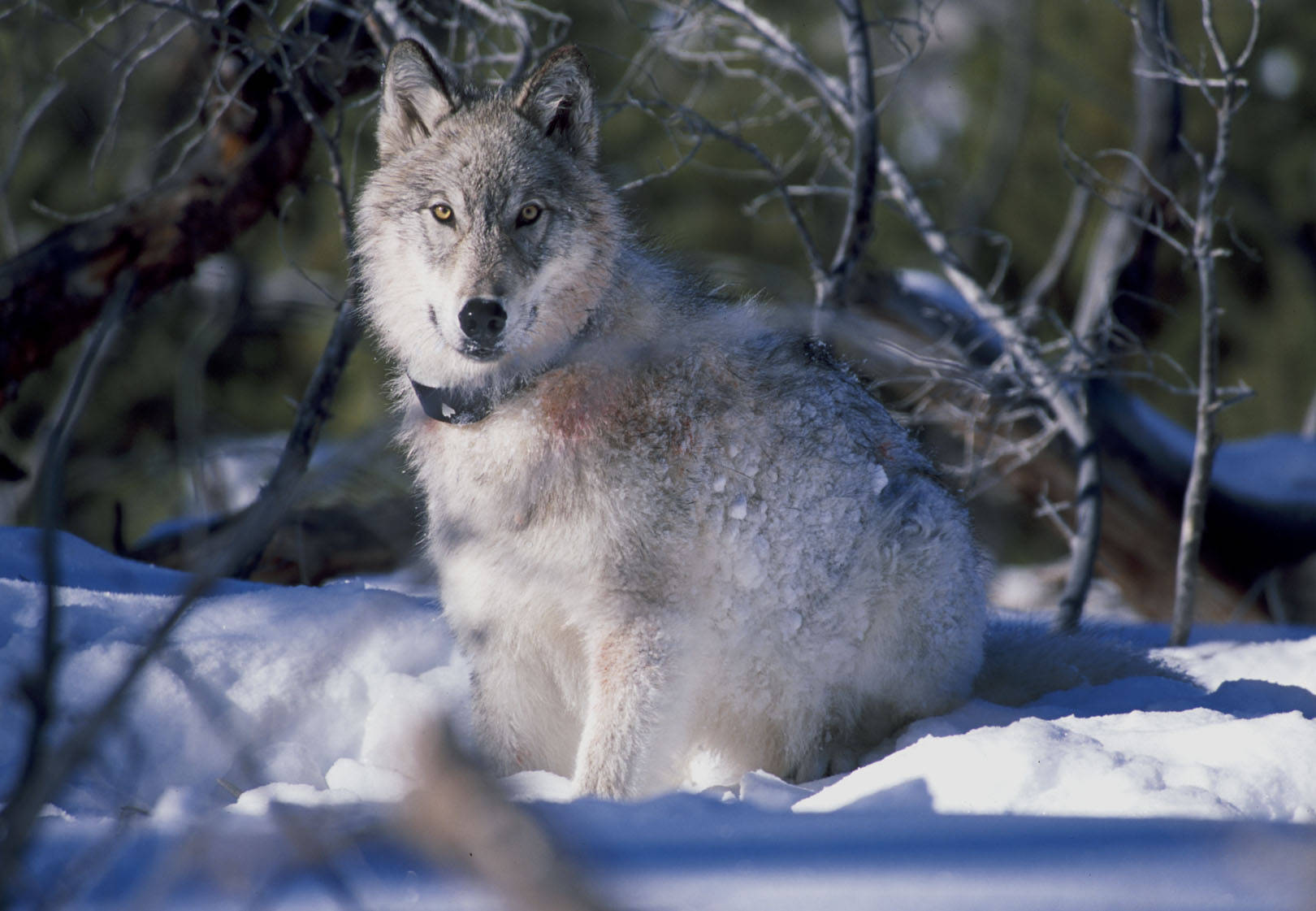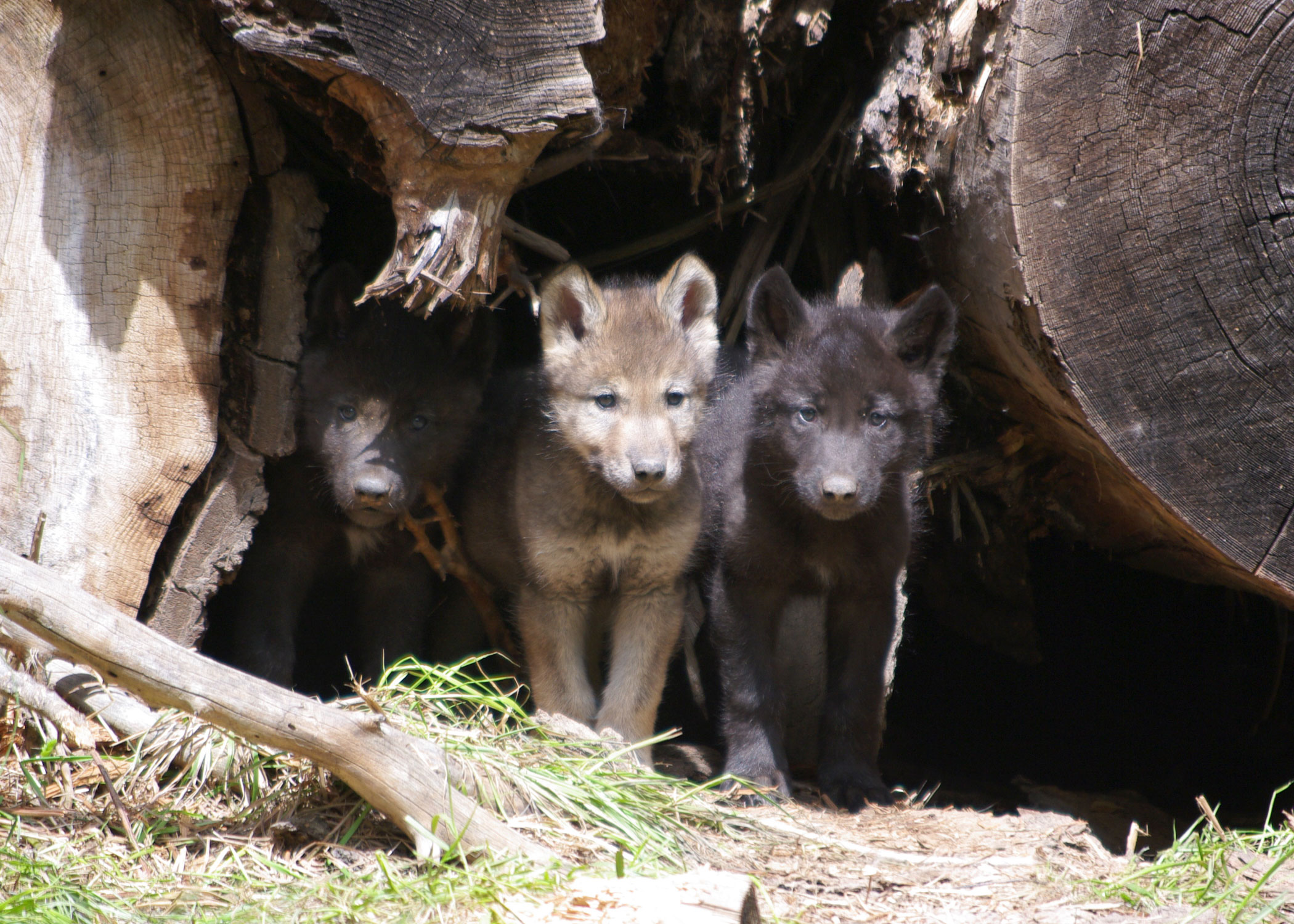A radio-collared wolf watches biologists in Yellowstone National Park. Photo courtesy of U.S. Fish and Wildlife Service.
Outside of fairy tales and folklore, humans have been alternately coexisting and clashing with wolves for millenia. As we have seen, Native peoples had developed a mythology around Canis lupus (the gray wolf) and Canis rufus (the red wolf). Soon after arriving on the eastern shores of North America, European Americans began to document their own experiences with the continent’s wolves. Some colonies were efficient in dealing with an animal their inhabitants saw as a menace, while others had less success in their eradication efforts. Jon Coleman reports in his book Vicious: Wolves and Men in America, colonists had exterminated coastal Boston’s wolves by 1657, while other colonists in Massachusetts were still dealing with wolves in the middle of the eighteenth century. These were not humane deaths. Coleman explains,
Examples of ugliness toward wolves stained every period of American history. It marked John Josselyn in the seventeenth century as well as the sport hunters who shot wolves from Piper Cubs buzzing low over Alaskan snowfields in the 1950s. Euro-Americans fractured wolf skulls and shotgunned wolf puppies. They set the animals on fire and dragged them to pieces behind horses. They destroyed wolves for a host of pragmatic reasons: to safeguard livestock, to knit local ecosystems into global capitalist markets, to collect state-sponsored bounties, and to rid the world of beasts they considered evil, wild, corrupt, and uplicitous. Their motives appear as blunt as a gunshot to the head, but wolves’ deaths were neither that quick nor that straightforward. They died with fractured spines and severed hamstrings, gifts from a predator dissatisfied with mere annihilation. (71)
Migrants on the overland trail to Idaho and other western parts also encountered wolves. With the buffalo on the decline from overhunting by European Americans, the wolves found the pioneers’ oxen and cattle—weakened from hard travel and a shortage of food and water—to be easy prey. That was hard enough for the migrants to handle. When, however, wolves began digging up the shallow graves of migrants who died along the trail, the Latter Day Saints who would settle Utah and Idaho declared an all-out war. Coleman [points out that] the State of Deseret—later Utah—issued bounties for wolves in 1850, and in 1851 Utah’s wolf bounty payments were exceeded by only one other item in the new U.S. territory: wars with Native Americans. “Mormon bounty hunters,” Coleman writes, “were so deadly they nearly bankrupted the territory.”
The slaughter of wolves and other canids—coyotes were also a favored target, especially when their populations increased with the decline in wolves—continued apace through much of the nineteenth and twentieth centuries, as ranchers in particular sought to protect their herds from predation. Wolves retreated north, to the cold of Minnesota, Michigan, Canada, and Alaska.
Even President Theodore Roosevelt engaged in wolf hunting. In this photograph from Oklahoma in 1905, he stands behind a John Abernathy, who holds a dead wolf by its jaw. Image courtesy of Library of Congress.
A change of heart and mind
Wolf pups from the Wenaha pack, in Oregon in 2012. The Wenaha pack formed when a small wolf pack crossed into northeast Oregon in 2008 from Idaho. Image courtesy of the Oregon Department of Fish and Wildlife.
In the last few decades of the twentieth century, many Americans began to reconsider their relationship with wolves. Wolves came in part to represent the romance of the desert, mountains, and frontier, the untamed nature of the American wilderness. Increasingly, too, environmentalists and others offered scientific arguments for the presence of the wolf in the American landscape. They argued that, as an apex predator, the wolf served an important role in regulating herbivores and, by controlling herbivore populations, restoring a balance to the ecosystem’s plants and other animals.
In 1966, Congress passed the Endangered Species Protection Act, which asked the Departments of the Interior, Agriculture, and Defense to protect endangered species, in part by preserving their habitat. In 1967, wolves were added to the list of endangered species, which offered them limited protection.
In 1973, Congress passed the more robust Endangered Species Act. In its summary of the act, the U.S. Fish and Wildlife Service explains that the act:
- authorizes the determination and listing of species as endangered and threatened;
- prohibits unauthorized taking, possession, sale, and transport of endangered species;
- provides authority to acquire land for the conservation of listed species, using land and water conservation funds;
- authorizes establishment of cooperative agreements and grants-in-aid to States that establish and maintain active and adequate programs for endangered and threatened wildlife and plants;
- authorizes the assessment of civil and criminal penalties for violating the Act or regulations; and
- authorizes the payment of rewards to anyone furnishing information leading to arrest and conviction for any violation of the Act or any regulation issued thereunder.
In 1974, the U.S. Fish and Wildlife Service (FWS) added four subspecies of the gray wolf to the list of endangered and threatened wildlife, and in 1978 listed the entire species of Canis lupus, thereby protecting all gray wolves in the lower 48 states under the Endangered Species Act.
Only two years later, the FWS published a comprehensive plan for wolf recovery—a huge step toward reintroduction of the wolf into the American West.
Continue to Wolves, Part IV: The 1980 and 1987 Wolf Recovery Plans
Print sources used in this section
Jon T. Coleman, Vicious: Wolves and Men in America (New Haven: Yale University Press, 2004): 71, 183.


